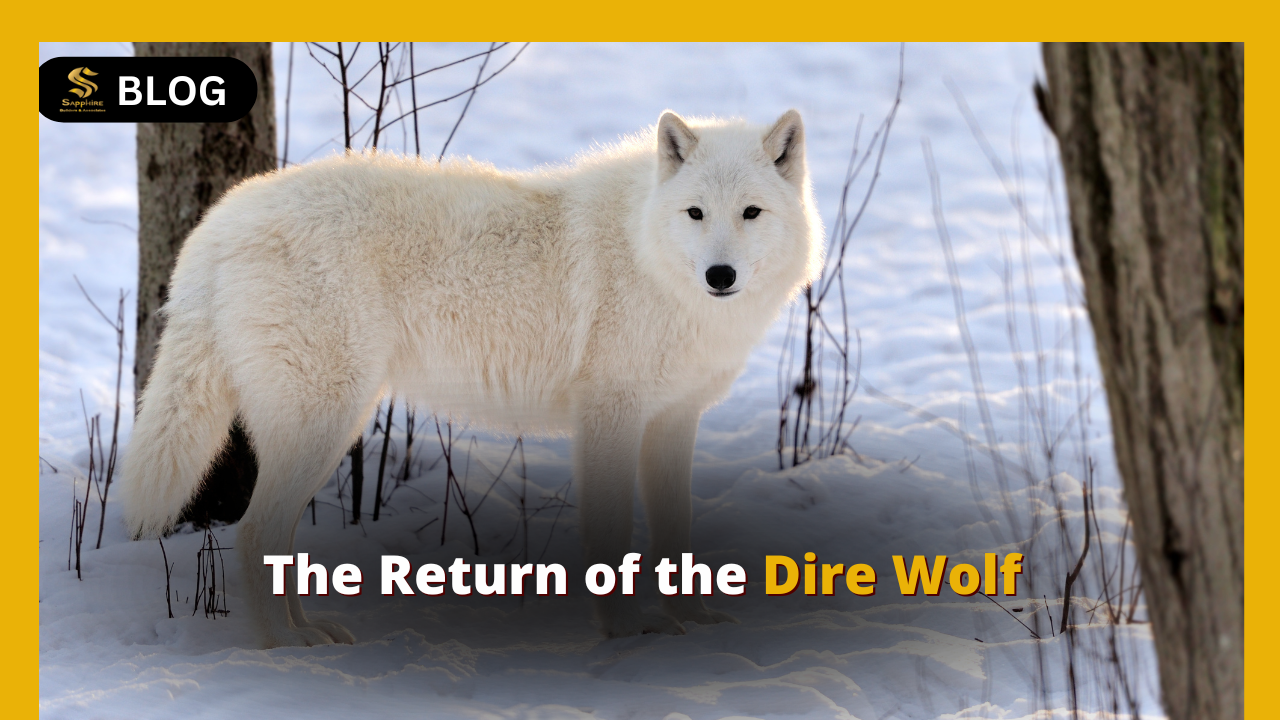
Share This Story, Choose Your Platform!
De-Extinction or Reinvention? The Truth Behind the Dire Wolf Revival
The world of science is buzzing with the recent claim that the dire wolf an ancient predator that vanished over 12,500 years ago has made a dramatic comeback. Thanks to the efforts of Colossal Biosciences, three wolf pups named Romulus, Remus, and Khaleesi have been born, engineered with genetic traits modeled after this long-extinct species.
The Science Behind the Comeback
Colossal Biosciences employed state-of-the-art gene-editing technology to bring this project to life. Using DNA recovered from dire wolf fossils including a tooth dated at 13,000 years old and a skull fragment estimated to be 72,000 years old scientists identified key differences between the dire wolf and its modern relatives, particularly gray wolves.
With this genetic blueprint, they used CRISPR technology to insert about 20 unique dire wolf-like genes into gray wolf cells. These alterations were designed to replicate traits such as a more massive frame, broader skulls, and denser coats hallmarks of the dire wolf’s fearsome profile. The embryos, once created, were implanted into domestic dogs, ultimately leading to the birth of the three pups.
Are They Really Dire Wolves?
Despite the excitement, many experts argue that what we’re seeing is not a true revival of the dire wolf. The dire wolf and gray wolf diverged millions of years ago, making them genetically more distant than previously thought. The DNA from ancient fossils is too fragmented to allow for direct cloning, so what has been achieved is a hybrid creation modified gray wolves that resemble dire wolves in appearance, but not necessarily in behavior or biology.
From a genetic standpoint, these animals share far more in common with gray wolves than with their extinct counterparts. So, calling them dire wolves might be more poetic than scientific.

You May Also Read
Best Location to Invest in Islamabad: Why Opal Mall Tops the List
The Ethical Dilemma
As awe-inspiring as this achievement might be, it raises significant ethical and ecological concerns. One major issue revolves around animal welfare. Cloning and gene-editing procedures can often involve high failure rates and health complications, not just for the resulting animals but also for the surrogate mothers.
Moreover, reintroducing even a proxy version of a long-extinct predator into modern ecosystems is a gamble. The natural habitats that once supported dire wolves no longer exist in the same form. Introducing these animals into today’s world without a well-thought-out ecological plan could create unforeseen disruptions.
Conservation: Past vs. Present
While reviving the past may captivate the public imagination, many conservationists argue that such efforts could divert attention and funding from more pressing environmental concerns. Numerous species today are on the brink of extinction, struggling due to habitat loss, climate change, and human conflict. Supporting these existing species and preserving their habitats might yield more practical benefits than resurrecting a predator from a bygone era.
Take, for example, vulnerable wolf populations in various regions of the world. They face immediate threats, and efforts to protect them could have a real, lasting impact on biodiversity.
The Road Ahead
The birth of Romulus, Remus, and Khaleesi showcases the tremendous strides science has taken in genetics and synthetic biology. It also forces us to rethink the boundaries of what is possible and what is responsible. While it’s tempting to see this as a triumph of technology over time, it’s equally important to ask: should we bring back what nature has already let go?
In the end, the return of the dire wolf, real or symbolic, is less about the animals themselves and more about the questions they raise. It’s a story of scientific possibility, wrapped in layers of ecological caution and ethical responsibility. As we stand on the edge of this new frontier, one thing is clear: the past may not be as far away as we once thought but how we choose to engage with it will define our future.



